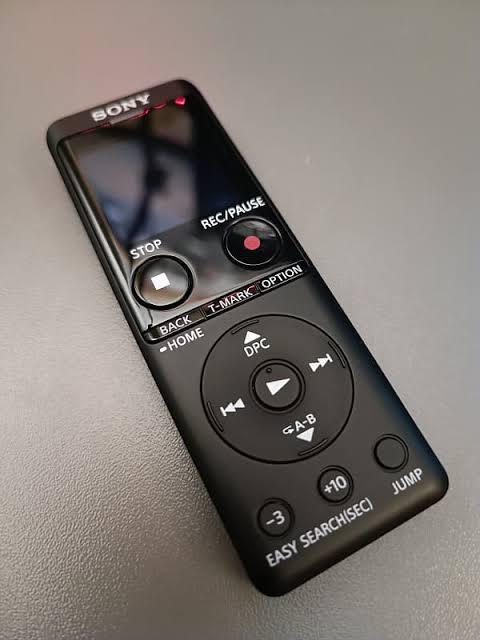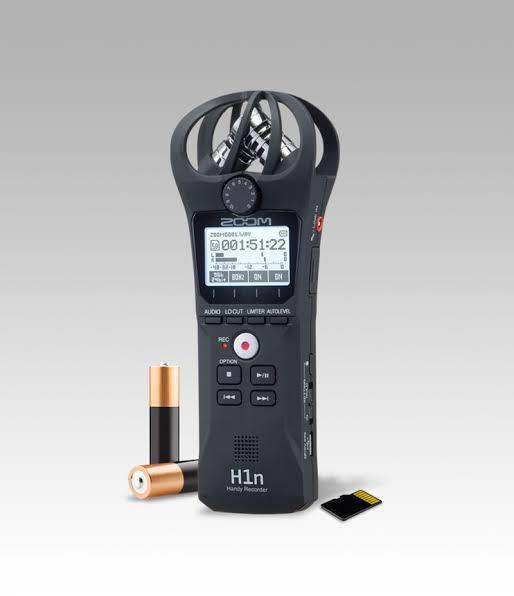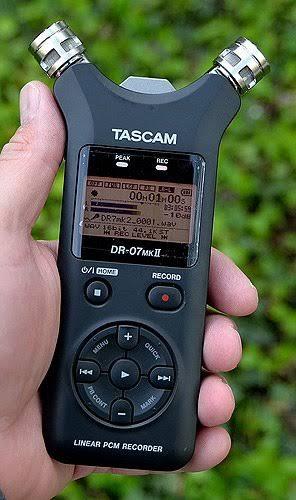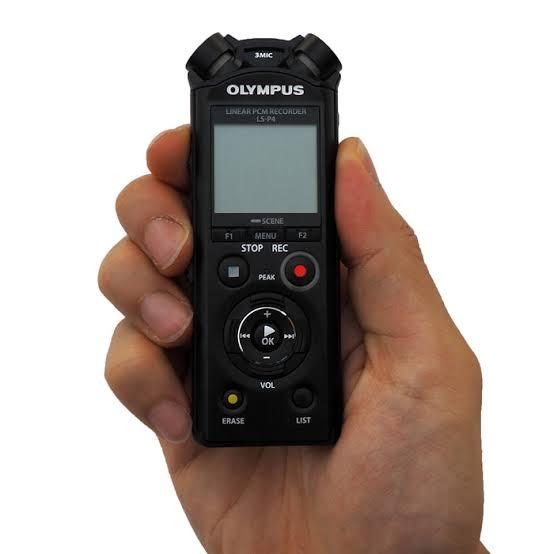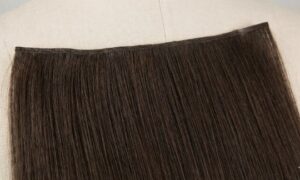In 2025, content creation has reached new heights. Podcasters, filmmakers, journalists, and musicians are all on the lookout for high-quality, portable audio solutions.
Whether you’re recording vocals, interviews, or ambient sound, having a reliable microphone recorder can make or break your project. With advancements in AI noise reduction, wireless technology, and compact design, the market is rich with options. We have tested several microphones to determine the best for you to use in 2025.
Hollyland Lark Max
Lark Max is another great option made by Hollyland for people looking for a high-quality wireless microphone recorder. Among many excellent features, the MaxTimbre microphone technology is the most notable one. This technology uses a multilayer membrane design to provide clear audio. Moreover, it helps reduce unwanted resonances, which makes it ideal for communicating or recording sound through your laptop.
Lark Max is equipped with a high-sensitivity omnidirectional transmitter/microphone that records sound at 24-bit/48kHz. As a result, you can capture audio with rich details. Its wireless range is up to 820ft without signal interference. Furthermore, it comes with Digital Signal Processing (DSP) technology that improves the quality of wireless audio signals. Additionally, the Lark Max has ENC technology that removes unwanted surrounding sounds.
Another great thing about this microphone is its built-in 8GB storage, which lets you record audio even if you are not connected wirelessly to the RX unit. Likewise, the TX/microphone captures sound in WAV file format without compressing the quality. Last but not least, the TX unit offers a great battery life of 7.5 hours.
Specs:
- Type: Wireless lavalier microphone
- Polar Pattern: Omnidirectional
- Wireless Range: Up to 820ft
- Battery Life: Up to 7.5 hours
- Frequency Response: 20Hz to 20kHz
- Microphone Sensitivity: –36dBFS +/- 1dB @ 1 kHz
- Connection Type: 3.5mm and USB-C
- Compatibility: Mobile devices, laptops/PCs, cameras, iPads, iPhones, Android phones, and tablets
- Controls: Home button and Quick Control knob
Pros:
- Premium build quality due to metal casing and durable clips
- The controls, such as the touch screen and menu dial, make navigation fast and easy
- Very effective noise cancellation
- The internal recording feature serves as an individual audio recorder
Cons:
- The units are a bit heavy compared to Lark M2 and Lark M1
More Picks at a Glance
| Model | Frequency Response | Sample Rate | Battery Life | Best For | Price |
| Sony ICD-UX570 | 50Hz – 20kHz | 16bit, 44.1kHz | 22 hours | Lectures, Meetings & Interview, Music | $128 |
| Zoom H1n | 20Hz – 20kHz | 16/24-bit, 44.1 / 48 / 96 kHz | 10 hours | Content Creating | $99 |
| Tascam Dr-07x | 20Hz – 20kHz | 16/24-bit, 44.1 / 48 / 96 kHz | 18 hours | Live Streaming & Podcasting | $119 |
| Olympus WS-853 | 70Hz – 17kHz | 16bit – MP3, 44.1kHZ | 30 hours | Meetings & Conferences | $69 |
| Olympus LS-P4 | 20Hz – 20kHz | 16/24-bit, 44.1 / 48 / 96 kHz | 30 hours | High-End Recording | $239 |
Note: The prices may change as time goes on
More Microphone Recorders: Detailed Reviews
- Sony ICD-UX570 — Best Overall Choice
One of my favorite features about the Sony ICD-UX570 is its long battery life. On average, I get over 20 hours of recording time on just a single charge. This made it easier for me to record lectures and speak at interviews for longer periods without interruptions.
Specifications
Polar Pattern: Omnidirectional
Frequency Response: 50Hz – 20kHz
Max SPL: 120dB
Connector: 3.5mm Mic Input, 3.5mm Headphone Out
Battery: 22 hours
Pros
- Offers good sound quality
- Comes with built-in USB
- Longer recording time
- Easy to navigate
Cons
- Renaming files can be challenging
Suitable for: Virtual lectures, hosting meetings, and recording music
Real Review from Amazon: “I recently purchased the Sony ICD-UX570 Digital Voice Recorder, and I must say, it has exceeded my expectations in every way.” — @JohnDoe
- Zoom H1n
Zoom H1n is a content creator’s dream. This device can be used to host podcasts, create vlogs, and more. I was able to shoot short films and record audio notes with the Zoom H1n. With just one touch, you can control your actions, including pause, stop, and play.
Specifications
Polar Pattern: Unidirectional
Frequency Response: 20Hz – 20kHz
Max SPL: 120dB
Connector: 3.5mm Stereo Mini Jack
Battery: 10 hours
Pros
- It features a built-in speaker
- They are portable and lightweight
- Access to external mic support
- It is affordable
Cons
- It has a limited memory
Suitable for: Vlogs, podcasts, and other content creation
Real Review from Amazon: “Perfect for recording audios. Audio quality is Crisp and clear. Looks and feels Plastic but is strong. Good connectivity to PC for easy transfer of files. Easy to Use and functions well.” — @JohnDoe
- Tascam Dr-07x
What I enjoyed the most while using the Tascam Dr-07x is its sound quality. It doesn’t matter when I record; the quality remains crisp and clean. It is also portable and small enough to fit into my pocket, giving me the chance to record audio and videos — anywhere, anytime.
Specifications
Polar Pattern: Unidirectional
Frequency Response: 20Hz – 20kHz
Max SPL: 125dB
Connector: 3.5mm Stereo Mini Jack
Battery: 18 hours on 2 AA batteries
Pros
- It is easy to use
- It offers longer recording hours
- It offers high-quality audio recording
Cons
- It doesn’t have XLR inputs; you can’t connect phantom-powered microphones
Suitable for: Live streaming and podcasts
Real Review from Amazon: “Portable, great sound recording, not sure what else you can ask for. I use it to record sound effects for ambient music, as it has a much better noise bottom than a cell phone.” — @JohnDoe
- Olympus WS-853
My favorite feature about the Olympus WS-853 is its long-lasting battery life. I got over 24 hours of recording time on just one charge. Aside from that, I admire its exceptional sound quality — I could host meetings and conferences with my team members without breaking up.
Read Full Olympus WS-853 Micro Review for more details.
Specifications
Polar pattern: Stereo – 90° Layout
Frequency response: 70Hz – 17kHz
Max SPL: N/A
Connector: 3.5mm Stereo Mini Jack
Battery: 30 hours
Pros
- It offers high-quality audio quality
- It is compatible with Windows and Mac
- It is easy to use
- It comes with an extensive memory
- You can enhance audio playback quality
Cons
- It isn’t voice-activated; you have to manually activate it
Suitable for: Professionals and workers in corporate industries.
Real Review from Amazon: “Sound quality is fine for my needs, and works fine in a room with 3-4 people being recorded for an interview.” — @JaneDoe
- Olympus LS-P4
One of the key features of the Olympus LS-P4 is its sampling rate — I could save my recordings in PCM, WAV, or MP3 format. And the best part is that all my audio files were high-quality.
Specifications
Polar pattern: Stereo – 90° Layout
Frequency response: 20Hz – 20kHz
Max SPL: N/A
Connector: 3.5mm Stereo Mini Jack
Battery: 30 hours
Pros
- It offers excellent sound quality
- It is quite easy to use
- It features auto-intelligent mode
- Long recording hours
Cons
- It is only accessible to Android users
Suitable for: High end recording
Real Review from Amazon: “Hands down the best Olympus I’ve ever owned.” @JohnDoe
FAQs
How Do I Connect a Microphone Recorder to My Phone?
Depending on the type of device you use, you can either use a 3.5mm jack or a USB-C cable. Once you plug in the cable, ensure your device is connected to the recorder and test it — simply record any sound.
What’s the Difference between a Recorder and a Microphone?
A microphone captures sound, while a recorder stores it. Some devices combine both in one unit, whereas others allow you to plug external mics into a recording unit. Many creators prefer integrated systems for simplicity, while professionals may opt for separate high-end components for more control.
Where Can I Get a Microphone Recorder?
You can purchase any of your preferred recorders from any online store like Amazon. Within a few days, you’ll receive the microphone recorder and you can start recording!


